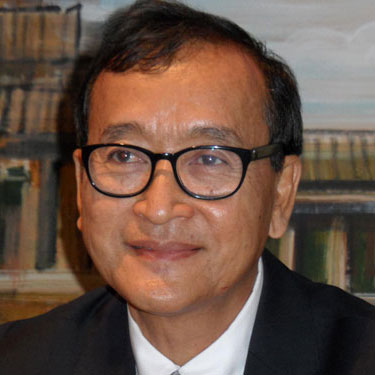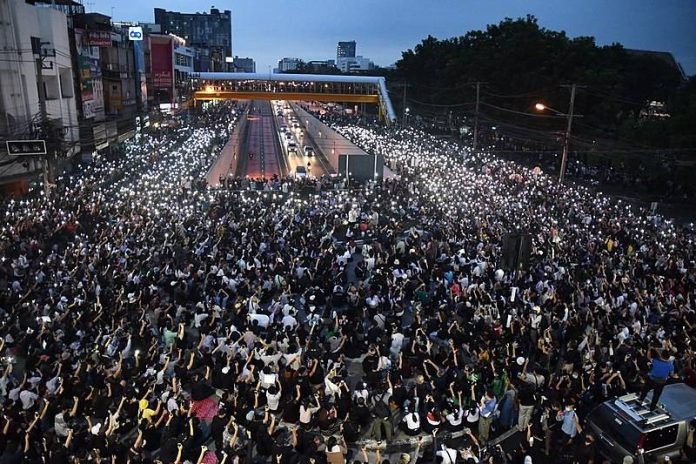Supporters of democracy in Cambodia and Thailand are engaged in the same struggle to achieve free, just and modern societies. There are reasons to hope that Thailand’s political crisis brought about by pro-democracy protests will be peacefully and internally resolved. Political progress in Cambodia, by contrast, will need sustained international engagement.
There is much that brings the two protest movements together. In both cases, use of the Internet, smartphones and social media means that what in previous decades would have been censored is now visible for all to see. This can only favour greater political accountability in both countries.
Thais and Cambodians have similar cultures and share a desire for political self-determination. Freedom-loving Cambodians around the world have given their backing for pro-democracy protests in Thailand, and I have been glad to add my support for the bravery and determination the protestors have shown.
The situation in Thailand is more promising than in Cambodia. The country has strong institutions which, given political will, can be modernised and reformed. Thanks to a lasting, historical national consensus and to a leadership which, regardless of political tendency, benefits from proper education, Thailand has a higher level of education than Cambodia and a more developed civil society. The Thai justice system is relatively independent in comparison with that of Cambodia, which is completely controlled by the government. Despite many restrictions, the Thai press has a greater degree of freedom and diversity than in Cambodia. Nor, in modern history, has Thailand suffered under tyrants as uneducated, brutal and destructive as Khmer Rouge leader Pol Pot (1975-1979) and former Khmer Rouge military commander Hun Sen (1979 until the present.)
Though the results of Thailand’s election in 2019 are contested, the government has at least felt confident enough to let opposition parties run and win seats. The Thai government, which functions under a multi-party system, has shown good sense in lifting a state of emergency which had made protest rallies illegal, correctly judging that the measure was simply inflaming protests. It has also said that it wants a dialogue with the protestors.
Such steps are anathema to Hun Sen, whose only response to political pluralism is the iron fist. After he had banned the Cambodia National Rescue Party (CNRP), the only parliamentary opposition party, by court order in November 2017, every single seat was won by the ruling party in the 2018 election. His regime continues to arbitrarily arrest anyone who supports the CNRP which, in the last national and local elections in which it took part in July 2013 and June 2017 respectively, collected 44 percent of the popular vote.
In Thailand, 55 members of parliament from the dissolved Future Forward Party were able to keep their seats by joining the new Move Forward Party, which remains an active force in parliamentary debate. By contrast, the 55 CNRP deputies were removed from parliament when the party was dissolved in 2017 and remain banned from political activity. Hun Sen’s ruling Cambodian People’s Party controls all the seats in the current, sham national assembly, so returning Cambodia to a one-party system as in the Cold War era.
Hiding behind the king
Cambodian institutions in truth have never fully recovered from the Khmer Rouge years. The country never moved beyond the 1970s: the Hun Sen regime in many ways is simply the Khmer Rouge Version 2.0. Cambodia’s military has none of the independent strength of that in Thailand. Hun Sen’s survival is ensured not by the army as a whole, but by his personal bodyguard units which are scattered between several different bodies. These units are far better paid, trained and equipped than the rest of the army, and are very well known for using brutal intimidation.
Both the Thai and the Cambodian dictatorships hide behind their monarchies as a pretext to help them hang to power. The difference is that Thailand has a strong king, whereas in Cambodia, we have a puppet. Norodom Sihamoni is either unwilling or unable to serve as a check on Hun Sen’s dictatorial power.
One of our king’s functions is to chair the Supreme Council of the Magistracy, whose duty is to ensure the proper functioning of the justice system in Cambodia. Yet our justice system is regularly ranked as one of the most corrupt and dysfunctional in the world. It serves as a tool to persecute anyone who disagrees with Hun Sen. Our king is simply allowing himself to be used as window-dressing to make this reality more palatable. His proper course of action would be to resign his Supreme Council role.
The Same Demands
The demands of democrats in the two countries take different forms but share the same substance. The Thai protests seek the resignation of Prime Minister Prayuth Chan-ocha, a revision of the constitution to introduce more checks and balances, as well as the reform of the monarchy. Even if implemented, these changes would leave the essential fabric of Thai institutions unchanged. Young people in Thailand do not want to destroy their country’s institutions: they want to make them more responsive, modern and inclusive.
In Cambodia the opposition also has three main demands. The first is the correct implementation of the 1991 Paris Peace Accords, especially the provisions relating to democracy and neutrality. The neutrality of our country is gravely compromised by Hun Sen’s willingness to accommodate Chinese expansionism by allowing Beijing to establish military bases on our soil. China’s use of military bases in Cambodia is a violation of international law. It threatens the security of the whole region including Thailand. The signatories of the Paris accords and all countries which value freedom and stability in Southeast Asia must act to counter this threat.
We also demand the reinstatement of the CNRP as a legitimate party of opposition and the holding of open, free and fair elections with the participation of all political parties. These steps would lead to a new regime in Cambodia and a completely new political culture.
It is likely that Cambodia will change more drastically than Thailand in the future. Thailand’s institutions are reformable and the collective political intelligence to reform them appears to exist. In Cambodia, rebuilding institutions in accordance with the 1993 constitution written under the supervision of the United Nations, and effectively implemented until Hun Sen’s coup in 1997, will be the challenge of the future. When Hun Sen’s rule ends, Cambodia will at last have the chance to move into a new era of democracy.
The views and opinions expressed in this article are those of the author.

Sam Rainsy, Cambodia’s finance minister from 1993 to 1994, is the co-founder and acting leader of the opposition Cambodia National Rescue Party (CNRP).


